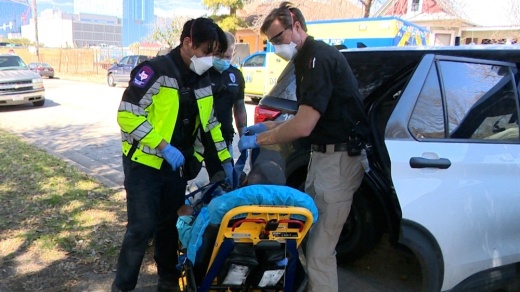The city announced March 21 that its Paramedic Practitioner Program is putting additional funding toward an expansion of its mental health and medical services. The PPP team has operated on the streets for years as a partnership between the office of Chief Medical Officer Dr. Mark Escott and Austin/Travis County EMS, and it will broaden with additional staff and services this year. The PPP is targeted at lower-income area residents, those living in health care deserts and the unhoused.
“Austin/Travis County has a lot of gaps among the vulnerable populations,” said Travis Baker, a senior paramedic practitioner and the PPP's clinical manager, in a statement. “This program delivers care that can help bridge the difference between critical care services and services that can be taken care of on-site such as stitches, IV fluids, burns, issues with asthma and other illnesses.”
According to the city, the PPP serves up to 200 patients monthly, around one-third experiencing homelessness, and provides basic treatments up to life-saving measures that in some cases can save patients a hospital or emergency room trip. The city said common calls for service include medicine refills or concerns such as wounds, infections and illnesses—many of which can be treated on the street. Program paramedics also offer information on housing and social services to patients in need.
"We have a large population living in Austin that knows of no other way to access medical care than to contact 911," said Chris Brown, an EMS physician assistant for the PPP. “Oftentimes, a paramedic practitioner is the only provider they have seen in a long period of time, and we are fortunate enough to be able to take time to listen to their complaints and medical issues and assist in their care."
Between 30%-40% of local 911 calls are not life threatening and may not require a hospital visit, according to Austin data. The city also said a PPP visit costs around one-fourth as much as an ambulance or one-tenth as much as a fire truck response might while also relieving the patient count, workload and response times for ERs and regional EMS.
“The success of this program in the past three years has been instrumental in reaching our most vulnerable populations by giving people medical care and options for helping to ensure their health and wellbeing,” Escott said. “We’re excited to be expanding this program and its services to our communities and continue to work on breaking down silos between the city of Austin, Travis County and other stakeholders by sharing communications and data.”





